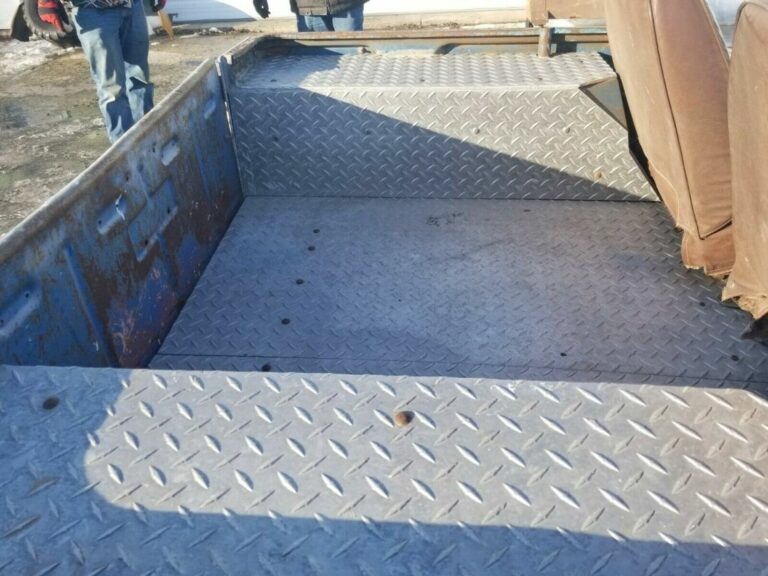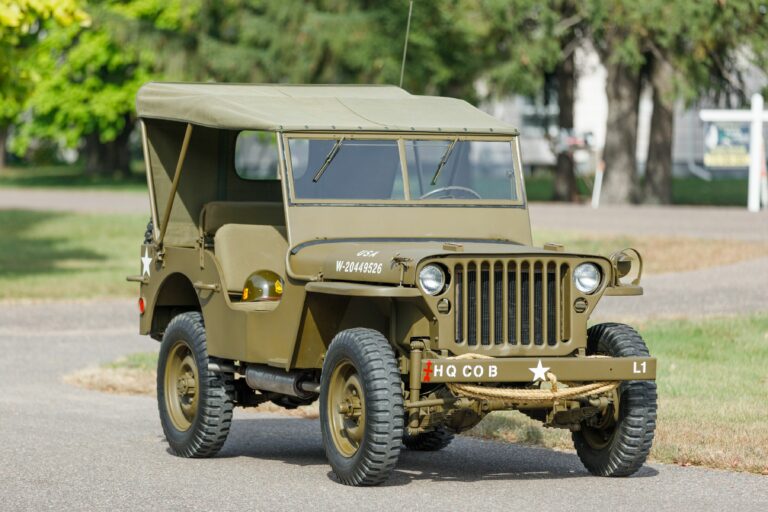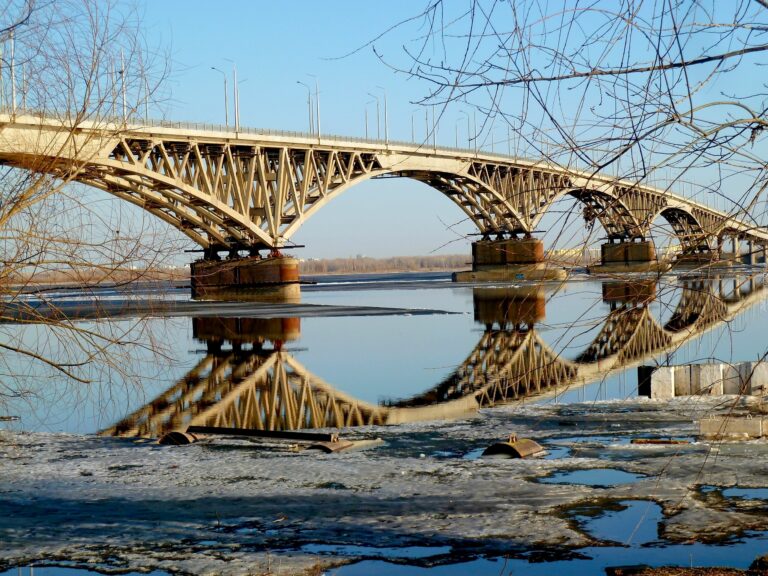Jeep Wrangler TJ Frame For Sale: A Comprehensive Guide to Revitalizing Your Off-Road Icon
Jeep Wrangler TJ Frame For Sale: A Comprehensive Guide to Revitalizing Your Off-Road Icon jeeps.truckstrend.com
The Jeep Wrangler TJ (1997-2006) holds a special place in the hearts of off-road enthusiasts and casual drivers alike. Known for its robust solid axles, coil-spring suspension, and timeless design, the TJ is a true workhorse. However, like any vehicle of its age, the TJ is susceptible to the ravages of time, particularly its most fundamental component: the frame. For many TJ owners, a compromised frame – whether due to severe rust, accident damage, or extreme off-road abuse – can seem like the end of the road. But fear not! The availability of replacement Jeep Wrangler TJ frames for sale offers a lifeline, transforming a seemingly condemned vehicle into a revitalized off-road icon.
This comprehensive guide will delve into everything you need to know about purchasing a replacement TJ frame. From understanding why you might need one to navigating the various types available, finding reputable sellers, and even touching upon the replacement process, we aim to provide you with the insights necessary to make an informed decision and breathe new life into your beloved Jeep.
Jeep Wrangler TJ Frame For Sale: A Comprehensive Guide to Revitalizing Your Off-Road Icon
Why Consider a Replacement TJ Frame?
The frame is the backbone of your Jeep Wrangler TJ. It supports the body, engine, transmission, suspension, and steering components. When this critical structure is compromised, the vehicle’s safety, integrity, and performance are severely jeopardized. Here are the primary reasons TJ owners seek replacement frames:
- Pervasive Rust: This is by far the most common culprit. TJs, especially those in regions exposed to road salt, humidity, or coastal conditions, are notorious for frame rust. Common problem areas include the skid plate mounting points, control arm mounts (upper and lower, front and rear), shock mounts, spring buckets, and the rear sections near the bumper and gas tank. While minor surface rust can be treated, deep, penetrating rust that compromises structural integrity (pitting, holes, flaking) necessitates replacement.
- Accident Damage: A severe collision can bend, twist, or crack the frame, rendering it unsafe and impossible to align correctly.
- Off-Road Abuse: While TJs are built for rugged terrain, extreme rock crawling, impacts, or improper recovery techniques can deform or crack frame rails and crossmembers.
- Restoration Projects: For enthusiasts undertaking a full restoration, starting with a pristine or new frame provides a solid foundation for a show-quality or highly capable build.
- Performance Upgrades: Some aftermarket frames offer enhanced designs, thicker steel, or specific modifications (e.g., stretched wheelbase, custom mounting points) ideal for extreme off-road builds that surpass the capabilities of the original frame.

Replacing the frame can be a more cost-effective and practical solution than purchasing an entirely new vehicle, especially if the body, engine, and other major components of your TJ are still in good condition.
Types of TJ Frames Available

When searching for a Jeep Wrangler TJ frame for sale, you’ll encounter a few distinct categories, each with its own set of pros and cons:
-
Used/Salvaged Frames:
- Description: These frames are pulled from donor TJs, often from accident vehicles or Jeeps with irreparable mechanical issues but intact frames.
- Pros: Generally the most affordable option.
- Cons: Condition can vary wildly. They might have hidden rust, previous damage, or weak spots that aren’t immediately apparent. Thorough inspection is crucial. You’re essentially inheriting someone else’s problem, albeit potentially a smaller one.
- Best For: Budget-conscious projects where extensive inspection and potential minor repairs are acceptable.

-
Refurbished/Blasted/Coated Frames:
- Description: These are used frames that have undergone a restoration process. This typically involves media blasting to remove all rust and old coatings, followed by inspection, minor repairs (if needed), and a protective coating (e.g., epoxy primer, chassis paint, powder coat).
- Pros: Improved aesthetics and rust protection compared to raw used frames. Potential for better structural integrity if properly inspected and repaired.
- Cons: More expensive than raw used frames. The quality of refurbishment can vary depending on the vendor. Major structural damage might not be fully addressed.
- Best For: Those seeking a cleaner, more ready-to-use used frame without the full cost of a new aftermarket option.
-
New Aftermarket Frames:
- Description: These frames are brand-new reproductions manufactured by specialized aftermarket companies (e.g., Throttle Down Kustoms, Safe-T-Cap, Rusty’s Offroad). They are typically built from heavier gauge steel than OEM and often incorporate design improvements or reinforcements.
- Pros: Brand new, no rust, no hidden damage. Often stronger and more durable than the original. Can be ordered with specific modifications or without certain mounts for custom builders. Perfect foundation for a long-term build.
- Cons: The most expensive option by a significant margin. Shipping costs can be substantial due to size and weight.
- Best For: Full restorations, high-performance off-road builds, or anyone who wants the absolute best and most durable foundation for their TJ, without compromise.
Where to Find a TJ Frame For Sale
Finding the right frame requires a targeted search. Here are the most common avenues:
-
Online Marketplaces:
- eBay, Facebook Marketplace, Craigslist: Excellent for finding used frames from private sellers or smaller salvage yards. Be extremely cautious and always request detailed photos, videos, and ideally, an in-person inspection. Prices can vary widely.
- Jeep-Specific Forums & Facebook Groups: Dedicated communities often have "For Sale" sections where enthusiasts sell parts. You might find a well-maintained used frame from a fellow Jeeper who understands the value of a good frame.
-
Specialized Jeep Parts Dealers & Aftermarket Manufacturers:
- Companies like Throttle Down Kustoms (TDK), Safe-T-Cap, and some larger custom fabrication shops specialize in or offer brand-new aftermarket frames. These are often built to order or in small batches.
- While larger retailers like Quadratec or Summit Racing typically sell frame components (e.g., repair sections, skid plates), they might direct you to manufacturers of full frames.
-
Salvage Yards / Auto Recyclers:
- Local and regional salvage yards are a good source for used frames. Calling ahead to inquire about TJ availability is advisable. Visiting in person allows for direct inspection.
-
Body Shops & Custom Fabrication Shops:
- Some shops that specialize in Jeep repairs or custom builds might have connections to frame suppliers or even have a spare frame from a past project.
Key Considerations When Buying a TJ Frame
Purchasing a frame is a significant investment. Here’s what you need to scrutinize:
-
Condition is Paramount:
- Rust: Beyond surface rust, look for deep pitting, flaking, or holes, especially in common problem areas (control arm mounts, skid plate mounts, spring buckets, rear sections). Tap with a hammer – a dull thud or crumbling indicates severe rust.
- Straightness: Check for any bends, twists, or kinks, particularly near impact zones or previous repair attempts. Use a straight edge or string line if possible.
- Cracks: Inspect all welds and stress points for hairline cracks.
- Previous Repairs: Are they professional and clean, or shoddy patches? Poor repairs can be worse than no repair.
- Mounting Points: Ensure all body mounts, suspension mounts, and drivetrain mounts are intact and not rusted out or damaged.
-
VIN Matching & Legality:
- In the TJ Wrangler, the primary VIN is stamped on the body tub (firewall). While some frames might have a partial VIN stamp, the vehicle’s legal identity is tied to the body. However, it’s crucial to ensure the frame you buy is legally sourced and not stolen. Always get a bill of sale.
- Check with your local Department of Motor Vehicles (DMV) regarding specific requirements for frame swaps and titling, especially if the frame has a different VIN or if you’re building a "reconstructed" vehicle.
-
Compatibility:
- Year Differences: While most TJ frames are largely interchangeable, there can be minor differences. For instance, early TJs (97-02) might have slightly different transmission crossmember mounts than later ones (03-06) or subtle changes in brake line routing. Confirm compatibility with your specific TJ year.
- Engine/Transmission: Ensure the frame’s mounting points align with your engine and transmission combination (e.g., 4.0L I6 vs. 2.5L I4, manual vs. automatic).
-
Shipping & Logistics:
- Frames are large, heavy, and awkward. Freight shipping can be expensive, often costing hundreds, if not over a thousand dollars, depending on distance and services (e.g., liftgate delivery).
- Consider local pickup if possible to save significantly on shipping costs and allow for in-person inspection.
- Ensure the seller can properly crate or secure the frame for transport.
-
Inspection:
- In-Person is Best: If at all possible, inspect the frame in person before committing. Bring a flashlight, a small hammer, and a keen eye.
- Detailed Photos/Video: If an in-person visit isn’t feasible, demand an extensive collection of high-resolution photos and videos of all angles, especially problem areas. Ask for specific close-ups.
The Replacement Process: A Brief Overview
A frame swap is a major undertaking, often considered one of the most involved repairs you can perform on a vehicle. It requires significant mechanical aptitude, specialized tools, and a suitable workspace.
- Preparation: Gather necessary tools (hoist, jacks, stands, wrenches, cutting tools), secure a spacious and level work area, and label everything.
- Disassembly: This involves systematically removing the body tub, engine, transmission, transfer case, axles, suspension components, steering linkage, fuel tank, and all wiring and brake lines from the old frame.
- Frame Preparation: Clean, inspect, and potentially coat the new frame with rust-preventative paint or undercoating before reassembly. Consider adding any desired frame reinforcements at this stage.
- Reassembly: Reverse the disassembly process, carefully mounting the body, drivetrain, suspension, and all other components onto the new frame. Replace worn bolts, bushings, and mounts as needed.
- Alignment & Testing: Once assembled, a professional wheel alignment is crucial. Thoroughly inspect all connections, test all systems (brakes, steering, lights), and perform a cautious test drive before putting the Jeep back into regular service.
While a DIY frame swap is possible for experienced mechanics, many opt for professional assistance due to the complexity, specialized equipment requirements, and safety considerations.
Practical Advice and Actionable Insights
- Budget Beyond the Frame: Factor in shipping costs, new hardware (bolts, body mounts), potential suspension components, brake lines, and even professional labor if you’re not doing it yourself.
- Document Everything: Take photos and videos of every step of disassembly. This will be invaluable during reassembly. Label every wire, hose, and bolt.
- Opportunity for Upgrades: A frame swap is the perfect time to replace old suspension components, install a lift kit, upgrade brakes, or add frame reinforcement for future off-road adventures.
- Safety First: Always use proper lifting equipment, jack stands, and personal protective equipment. Never work under an unsupported vehicle.
- Don’t Rush: This is not a weekend project. Plan for several weeks or even months, especially if you encounter unexpected issues or decide to undertake additional upgrades.
Estimated Price Table: Jeep Wrangler TJ Frame For Sale
Prices for Jeep Wrangler TJ frames can fluctuate significantly based on condition, type, seller, and market demand. The table below provides estimated ranges for different frame types. These prices do not include shipping, which can add hundreds to over a thousand dollars.
| Frame Type | Condition / Description | Estimated Price Range (USD) | Key Considerations |
|---|---|---|---|
| Used/Salvaged | Poor/Fair: Significant surface rust, minor damage. | $500 – $1,500 | Requires extensive cleaning, rust treatment, and potentially repairs. High risk of hidden issues. Best for experienced DIYers on a tight budget. |
| Used/Salvaged | Good: Minimal surface rust, no major structural issues. | $1,500 – $2,500 | Still requires thorough inspection and likely some rust remediation/coating. Good value if truly in solid condition. |
| Refurbished | Blasted & Coated: Used frame, cleaned and protected. | $2,500 – $3,500 | Offers a cleaner starting point. Verify the quality of blasting and coating. Ensure no major structural repairs were simply covered up. |
| New Aftermarket | Bare Frame: Brand new, unpainted, heavy-duty steel. | $3,500 – $5,000+ | The most durable and long-lasting option. Often thicker steel than OEM. Perfect for full restorations or custom builds. Will require painting/coating and potentially custom drilling for specific components if not pre-drilled. |
| New Aftermarket | Painted/Coated: Brand new, pre-finished. | $4,000 – $6,000+ | Ready for assembly. Higher upfront cost, but saves time and effort on prep work. Ideal for those wanting a ready-to-go solution. |
Disclaimer: These are approximate price ranges and can vary widely based on location, seller, specific condition, and market demand. Always verify current prices and condition directly with the seller.
Frequently Asked Questions (FAQ)
Q1: Is a frame swap worth the effort and cost?
A1: For many TJ owners, absolutely. If your engine, transmission, axles, and body tub are in good shape, a frame swap can be significantly more cost-effective than buying another used TJ (which might have its own hidden frame issues) or a new vehicle. It breathes new life into a beloved Jeep.
Q2: How long does a frame swap typically take?
A2: For an experienced DIY mechanic working consistently, it can take 2-4 weeks. For someone less experienced or working only on weekends, it could easily stretch to 1-3 months. Professional shops might complete it in 1-2 weeks, depending on their schedule and staffing.
Q3: Do I need to report a frame swap to the DMV?
A3: This varies by state or province. In many jurisdictions, the vehicle’s VIN is primarily tied to the body, so a frame swap might not require a new title or VIN inspection. However, some states do require inspection or titling as a "reconstructed" vehicle. Always check with your local DMV to ensure compliance.
Q4: Can I use a frame from any year TJ for my Jeep?
A4: Generally, yes, within the 1997-2006 TJ generation. However, be aware of minor differences, such as crossmember designs, transmission mounts (especially between 4-cylinder and 6-cylinder models), and subtle changes in mounting points for brake lines or other components. Always confirm compatibility with your specific year and drivetrain.
Q5: What are the most common rust spots on a TJ frame to check?
A5: Key areas include the skid plate mounting points (where dirt and moisture collect), front and rear control arm mounts (upper and lower), spring buckets, shock mounts, the rear section near the gas tank skid and bumper, and the frame rails themselves, especially where they curve.
Q6: How much does it cost to ship a TJ frame?
A6: Shipping costs can range from $300 to $1,500+ within the continental US, depending on the distance, the freight company, and whether you require services like liftgate delivery to a residential address. It’s often cheaper to pick up locally or have it delivered to a commercial address with a forklift.
Q7: Can I reinforce a new aftermarket frame?
A7: Many new aftermarket frames are already built stronger than OEM. However, for extreme off-road use, additional reinforcement plates, crossmembers, or custom bracing can be welded on by a professional fabricator to further enhance durability.
Conclusion
The Jeep Wrangler TJ is more than just a vehicle; it’s an experience, a lifestyle, and often a cherished member of the family. While rust and damage can threaten its existence, the availability of replacement frames offers a viable and rewarding path to resurrection. Whether you opt for a carefully inspected used frame or invest in a brand-new, robust aftermarket chassis, a frame swap can transform your TJ, extending its life for many more years of adventure. This undertaking is significant, but with careful planning, thorough research, and a commitment to quality, you can ensure your beloved TJ continues to conquer trails and turn heads for generations to come.




